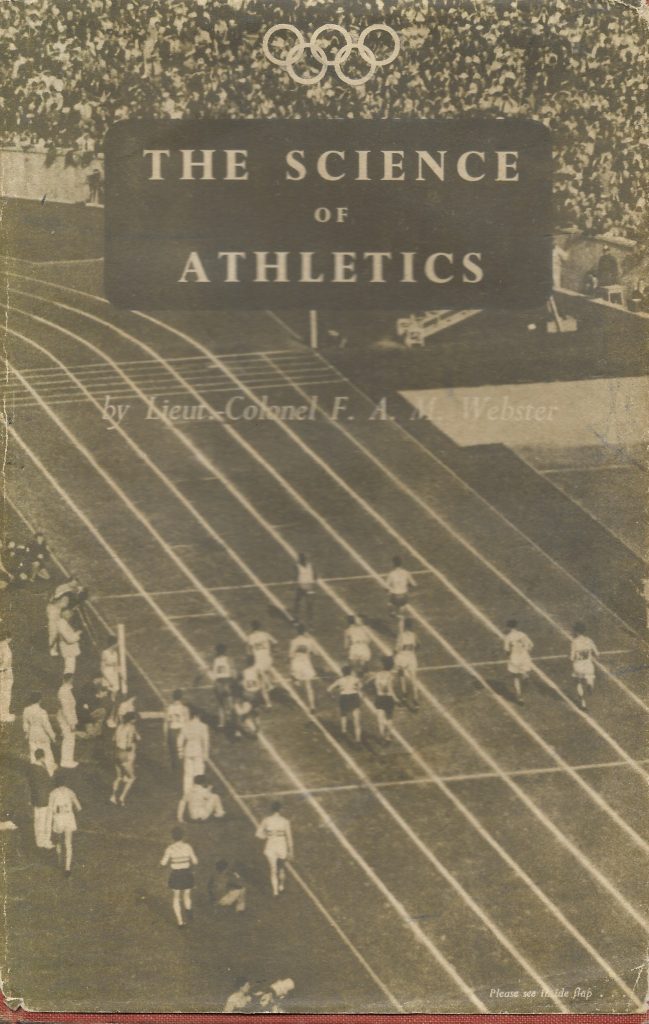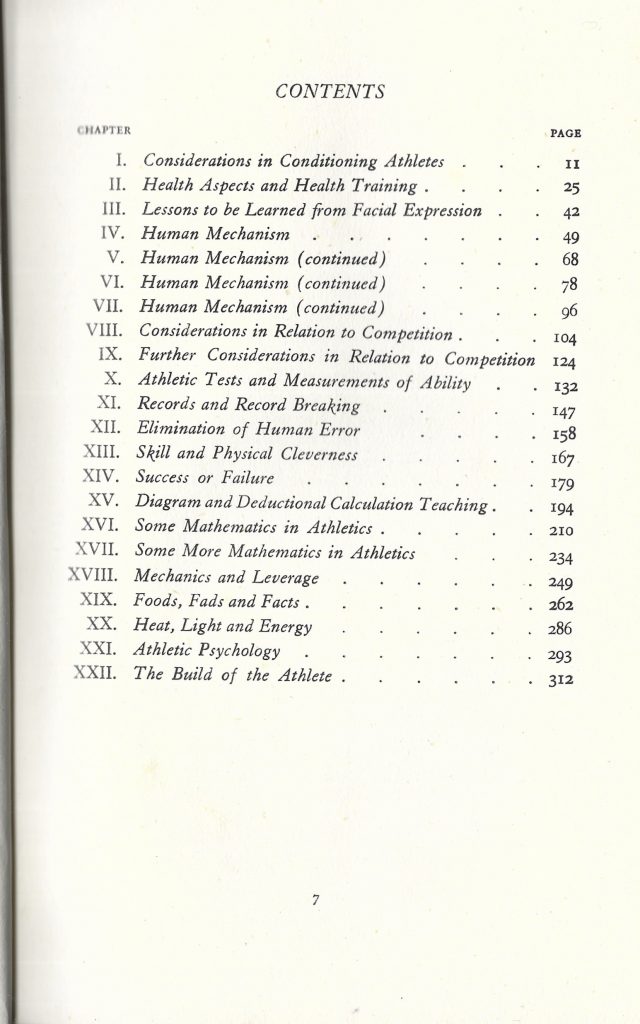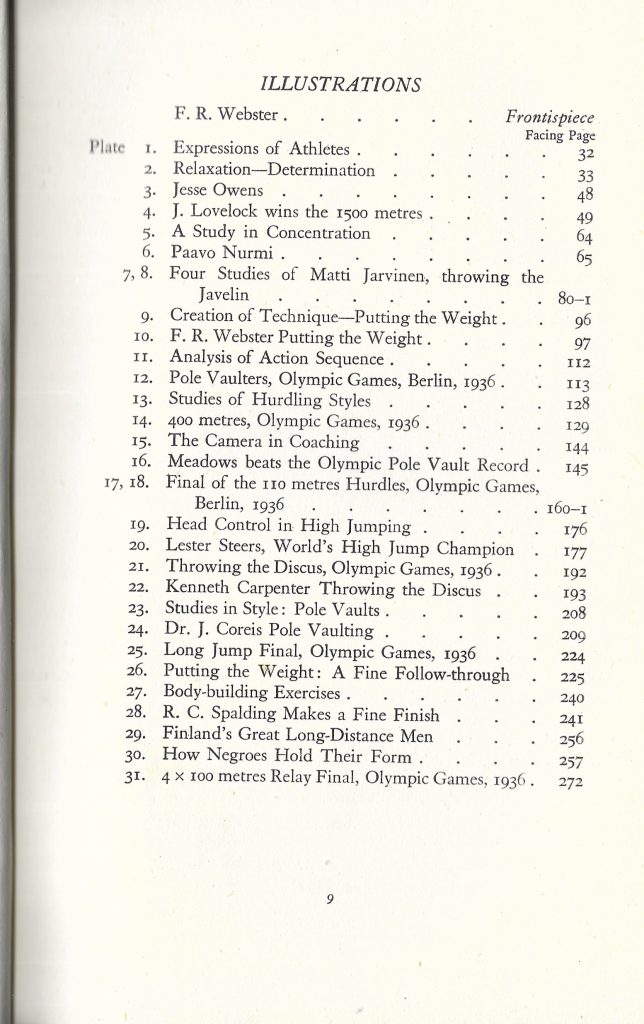In the late 1970’s I was given a hard back copy of FAM Webster’s book “The Science of Athletics”, written in 1936, by Bernie Fickling of Springburn Harriers. It was based on his earlier book “Why? The Science of Athletics”. Lt Col Webster was the founder of the School of Athletics at Loughborough College and his book was to revolutionise the approach to athletics in Britain. His protege Geoff Dyson came up with “The Mechanics of Athletics” in 1961 and was accepted all over the world as THE authority. There were others (eg ‘The Human Machine’ by Adolphe Abrahams) but Dyson’s was the one that took off. Webster’s book has been reprinted in America by Amazon in 2021. They say:
“The Science of Athletics” is a comprehensive guide to athletics instruction written by F. A. M. Webster, originally intended for athletics coaches and teachers. It offers a fantastic introduction to the subject with a particular focus on the science, making it ideal for anyone with a serious interest in learning or teaching athletics. Contents include: “Considerations in Conditioning Athletics”, “Health Aspects and Health Training”, “Lessons to be Learned from Facial Expression”, “Human Mechanism”, “Considerations in Relation to Competition”, “Athletic Tests and Measurements of Ability”, etc. Frederick Annesley Michael Webster (1886 – 1949) was a British athletics coach and author, and soldier active during World War One. He wrote profusely on the subject of athletics, with his best known book being “Athletics in Action” (1931). Many vintage books such as this are becoming increasingly scarce and expensive. We are republishing this volume now in a modern, high-quality edition complete with a specially-commissioned new introduction on athletics.
He is still highly thought of and was inducted into the England athletics Hall of Fame in 2012. Others inducted at the same time were Don Finlay, David Moorcroft, Chris Chataway, Tessa Sanderson, Fred Housden, Wilf Paish, Fatima Whitbread, Marea Hartman and Douglas Lowe.
But to the book. Let us first look at the table of contents.
If we look at it the first thing that we notice is the word “considerations” – in other words the book is not a simple series of instructions, not a ‘cookbook’ approach to coaching. It is not Chapter 1: Sprinting; Chapter 2: Middle Distance Running; Chapter 3. etc until all track events and all eight field events have been covered, schedules included, which will guarantee success. He asks what we would now call FAQs, as well as some less obvious ones and attempts to answer them head on. He covers food, psychology, etc. He also in the course of the book deals with simple but essential skills the coach needs such as that of observation: facial expression has a whole chapter for instance. But in the main the body as a machine – a clear fore runner of Dyson’s book of 1961 – is the topic under consideration. The book has 31 pages of quality photographs, reproduced below.
Note that again it is not a simple series of illustrations of athletes in action although there are plenty of those. Expressions appear again, relaxation and determination are there too. He also mentions in the text and there is a page of illustrations on the camera in coaching. His whole approach is laid out for all to see, to learn from and, yes, to query.
For us, he is important as a coach whose work was important in the development of coaching and, especially, his place in the development of a coaching structure in Britain. After the 1939-45 War, when the AAA’s wanted to do well in the Olympic Games of 1948, they appointed Webster as National Coach and he it was who recruited Geoff Dyson before such luminaries as John le Masurier and his generation came on the scene.


